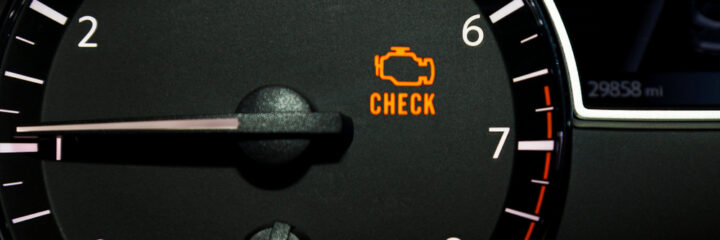The “Check Engine” light comes on when your car’s computer detects an anomaly, one of which can be responsible for the car shaking-engine light on development. Here’s a list of three of the most likely reasons this might be happening;
- Faulty spark plugs
- Low fuel pressure, and
- Misfires
Just to be on the safe side, misfires have nothing to do with gunshots. The technical explanation of the term is the result of incomplete combustion (or zero combustion) inside one or more of an engine’s cylinders. Now, that’s technically speaking.
The non-technical explanation is the shaking or stalling while the engine is running. Expectedly, the check engine light would come on. The motor becomes unbalanced each time there is a misfire, and you’d feel that as a shake or vibration.
And then there’s the spark plug. Your vehicle’s spark plug should last up to 100,000 miles before needing to be replaced. Now, if you don’t do that promptly, you are very likely to have a valve malfunction problem.
As for fuel pressure, several factors can cause low fuel pressure. The list includes a dirty fuel filter, a weak pump, incorrect tank venting, restricted fuel lines, a clogged pump inlet strainer, and a faulty electrical control.
As you can imagine, low fuel pressure is a recipe for weak combustion due to faulty air-fuel mixture. That weak combustion is what the driver would feel as misfires while the motor is running. It’s a sure sign the vehicle’s fuel pump is malfunctioning if the motor stalls on acceleration.
The good news is that a vehicle’s fuel system usually requires minor tweaks. I said “usually” because it can be a pain in the backside sometimes. Alright, what about a broken idle air control valve?
A broken idle air control valve can also cause the engine to idle below the normal idling RPM, which would lead to overheating, shaking, or abnormal vibration. The result is a loss of power that reverberates throughout the engine, as well as ignition and fuel timing issues.
As stated earlier, several factors can cause car shakes or vibrations. A broken engine mount is one of those factors. Engine mounts are rubber-mounted supports that hold the engine to the vehicle’s chassis. You can expect the engine to vibrate excessively if the mount breaks or weakens or fails.
So, what can you do? If the check engine light glows continuously instead of slowly, it may be an indication of a serious problem. The three issues listed above are just the most common and most likely factors behind a car shaking or vibrating with the engine light on. That’s to say there are other factors, including a faulty intake manifold gasket, and a faulty ignition coil.
Ignition coils produce the spark the cylinder needs to fire once the crankshaft appears. An auto technician can inspect the coil and, if necessary, replace it. As for the intake manifold gasket, they serve as a seal for the small gap between the manifold and the engine.
The seal prevents leakages of air, coolant, and oil. You can expect the motor to overheat if the seal is weak. It helps that you already have a general idea of potential reasons behind the vehicle’s behavior but what you can and should do is consult an auto mechanic to diagnose what exactly is wrong with the vehicle. Your local mechanic should be able to tell you why your car is shaking with the engine light on.


